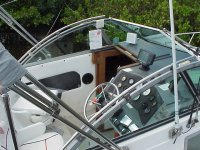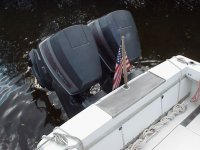Virtual Vessel Safety Check
You can use this page to examine your own boat. We suggest you print the form that we use to also use as a guide while performing this self-inspection. You can get the form here and it requires that you have the free Adobe Acrobat reader installed on your computer. If you do not have the reader, you can download a copy from here: Adobe Acrobat Reader.
After you have completed the self-examination, you can request that one of our examiners perform an actual Vessel Safety Check by going to the "I Want a VSC" page at http://SafetySeal.net/GetVSC/ and enter your ZIP Code to contact an examiner near you,
or you can email one of our local Vessel Safety Check Examiners Click Here for a list.
Item 1 - Display of Numbers:
The boat's registration number must be permanently attached to each side of the forward half of the boat They must be plain, vertical, block characters, not less than three (3) inches high, and in a color contrasting with the background. A space must separate the letters from the numbers.
As of September 1, 2021, California state law requires boats and vessels registered in California to display a mussel sticker if they are operated in fresh waters. This includes inland waterways, rivers, lakes, reservoirs, wetlands, and the Sacramento-San Joaquin Delta. Failure to properly display the sticker may result in denial of access or citation. Documented vessels are exempt.
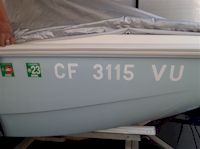
Item 2 - Registration / Documentation:
Original Registration or Documentation papers must be on board and available. Documentation numbers must be permanently marked on a visible part of the interior structure. The documented boat's name and hailing port must be displayed on the exterior hull in letters not less than 4 inches in height. To be documented a boat must be 5 net tons or greater.
Item 3 - Personal Flotation Devices (PFD):
Acceptable PFDs (also known as Life Jackets) must be U.S. Coast Guard approved, in good serviceable condition, and of suitable size for the each person on the boat. Children must have properly fitted PFDs designed for children. Wearable PFDs shall be "readily accessible." Throwable devices shall be "immediately available." PFDs shall NOT be stored in unopened plastic packaging. For Personal Watercraft riders, the PFD must be worn and indicate an impact rating. Boats 16 feet and longer must have at least one Type IV Throwable device.
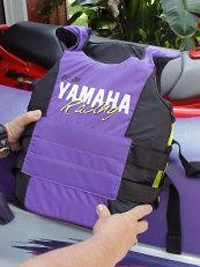
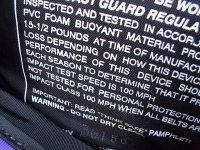
Item 4 - Visual Distress Signals (VDS):
Recreational boats 16 feet and over used on coastal waters or the Great Lakes are required to carry a minimum of either 1) three day and three night pyrotechnic devices, 2) one day non-pyrotechnic device (flag) and one night non-pyrotechnic device (auto SOS light) or 3) a combination of 1) and 2). Recreational boats less than 16 feet on coastal waters or the Great Lakes need only carry night visual distress signals when operating from sunset to sunrise.
It is recommended, but not required, that boats operating on inland waters should have some means of making a suitable day and night distress signal. The number and type of signals is best judged by considering conditions under which the boat will be operating. Alternatives to pyrotechnic devices (flares) include:
Night
Strobe light
Flashlight
Lantern
Signal mirror
Red or orange flags
Hand signals
Vessels operating in an area less than 2 miles wide are not required to carry Visual Distress Signals. When VDS are required, consider the new electronic flares as they do not expire and there are very few places to dispose of the handheld flares.
Item 5 - Fire Extinguishers:
Fire extinguishers are required if one of the following conditions exists: (1) Inboard engine(s); (2) Closed compartments that store portable fuel tanks; (3) Double bottom hulls not completely sealed or not completely filled with flotation materials (4) Closed living space (5) Closed stowage compartments that contain flammable materials or (6) Permanently installed fuel tanks.
Recreational vessels constructed prior to August 22, 2016 will be deemed built before model year 2017 and must meet the requirements listed below. Previously installed extinguishers with extinguishing capacities that are less than what is required in the table below need not be replaced but must be maintained in good serviceable condition. All extinguishers installed after August 22, 2016 must meet the applicable equirements.
Boats less than 26 feet and 2018 model year or newer must carry unexpired "5-B", "10-B", or "20-B" fire extinguishers. Having older "B-I" or "B-II" types do not meet the new carriage requirements, effective April 20, 2022.
A vessel less than 26 feet in length and propelled by an outboard motor is not required to carry portable fire extinguishers if construction of the vessel will not permit the entrapment of explosive or flammable gases or vapors.
Minimum number of extinguishers required |
||
Boat Length |
No Fixed System |
With Fixed System |
Less than 26' |
1 B-I/5-B/10-B |
0 |
26' to less than 40' |
2 B-I/5-B/10-B or |
1 B-I/5-B/10-B |
40' to 65' |
3 B-I/5-B/10-B or |
2 B-I/5-B/10-B or |
One 20-B portable fire extinguisher may be substituted for two 5-B extinguishers.
Disposable fire extinguishers more than 12 years old must be replaced.
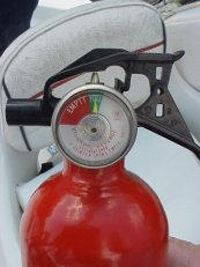
Item 6 - Ventilation:
Boats with gasoline engines in closed compartments, built after 1 August 1980 must have a powered ventilation system. Those built prior to that date must have natural or powered ventilation.
Boats with closed fuel tank compartments built after 1 August 1978 must meet requirements by displaying a "certificate of compliance." Boats built before that date must have either natural or powered ventilation in the fuel tank compartment.
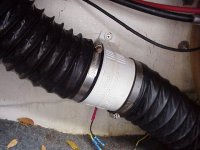
Item 7 - Backfire Flame Control:
All gasoline powered inboard/outboard or inboard motor boats must be equipped with an approved backfire flame control device.
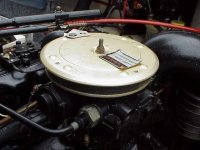
Item 8 - Sound Producing Devices:
To comply with Navigation Rules and for distress signaling purposes all boats must carry a sound producing device (whistle, horn, siren, etc.) capable of a 4-second blast audible for ½ mile.
Item 9 - Navigation Lights:
All boats must be able to display navigation lights between sunset and sunrise and in conditions of reduced visibility. Boats 16 feet or more in length must have properly installed, working navigation lights and an all-around anchor light capable of being lit independently from the red/green/white "running" lights. All lights should not be obstructed from view when seen by an approaching vessel.
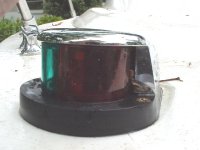
Item 10 - Pollution Placard:
Boats 26 feet and over with a machinery compartment must display an oily waste "pollution" placard.
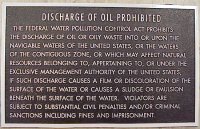
Item 11 - MARPOL Trash Placard:
Boats 26 feet and over in length must display a "MARPOL" trash placard. Boats 12 meters (40 feet) and over must also have a written trash disposal/waste management plan.
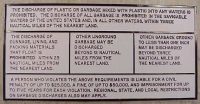
Item 12 - Marine Sanitation Devices:
Any installed toilet must be a Coast Guard approved device. Overboard discharge outlets must be capable of being sealed.
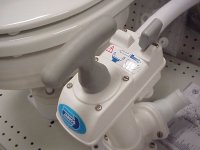
Item 13 - Navigation Rules:
Boats 39.4 feet and over must have on board a current copy of the Navigation Rules. Rules may be either hard copy or electronic.
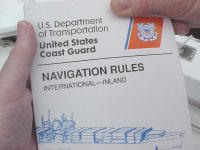
Item 14 - State and/or Local Requirements:
These requirements must be met before the "Vessel Safety Check" decal can be awarded. A boat must meet the requirements of the state in which it is being examined.
Item 15 - Overall Vessel condition:
As it applies to this Vessel. Including, but not limited to:
- Deck free of hazards and clean bilge:
The boat must be free from fire hazards, in good overall condition, with bilges reasonably clean and visible hull structure generally sound. The use of automobile parts on boat engines is not acceptable. The engine horsepower must not exceed that shown on the capacity plate.
- Safe Electrical and Fuel Systems:
The electrical system - Must be protected by fuses or manual reset circuit breakers. Switches and fuse panels must be protected from rain or water spray. Wiring must be in good condition, properly installed and with no exposed areas or deteriorated insulation. Batteries must be secured and terminals covered to prevent accidental arcing.. If installed, self-circling or kill switch mechanism must be in proper working order. All PWCs require an operating self circling or kill switch mechanism.
Fuel Systems - Portable fuel tanks (normally 6 gallon capacity or less) must be constructed of non-breakable material and free of corrosion and leaks. All vents must be capable of being closed. The tank must be secured and have a vapor-tight, leak-proof cap. Each permanent fuel tank must be properly ventilated.
- Safe Galley and Heating Systems:
System and fuel tanks must be properly secured with no flammable materials nearby.
Additional Information:
Engine Cut-off Switch: Effective April 1, 2021, vessels manufactured after January 2020 with a length less than 26 feet and an engine having more than 3 horsepower are required to have an engine kill switch. Vessels with a helm enclosed by a cabin are exempt.
